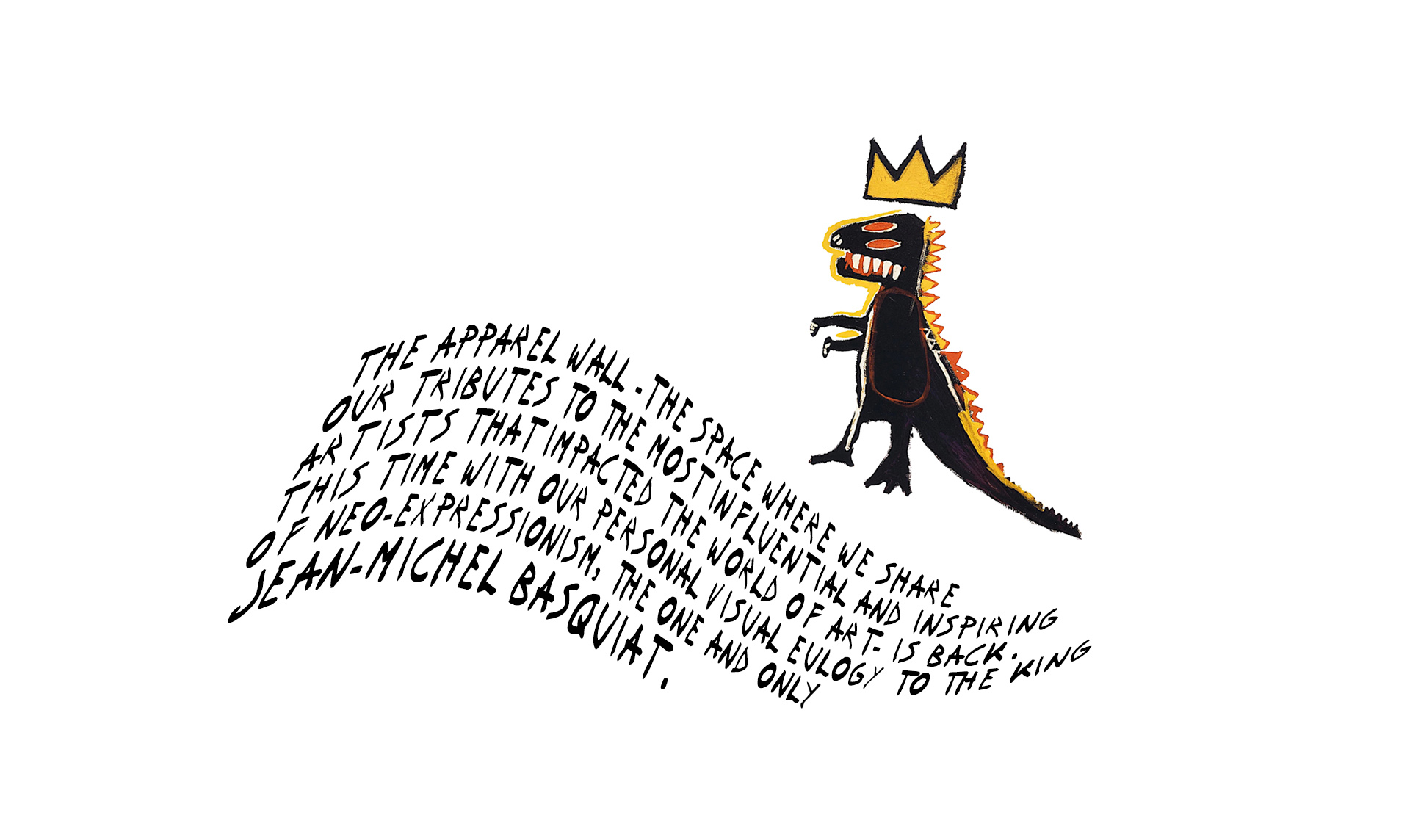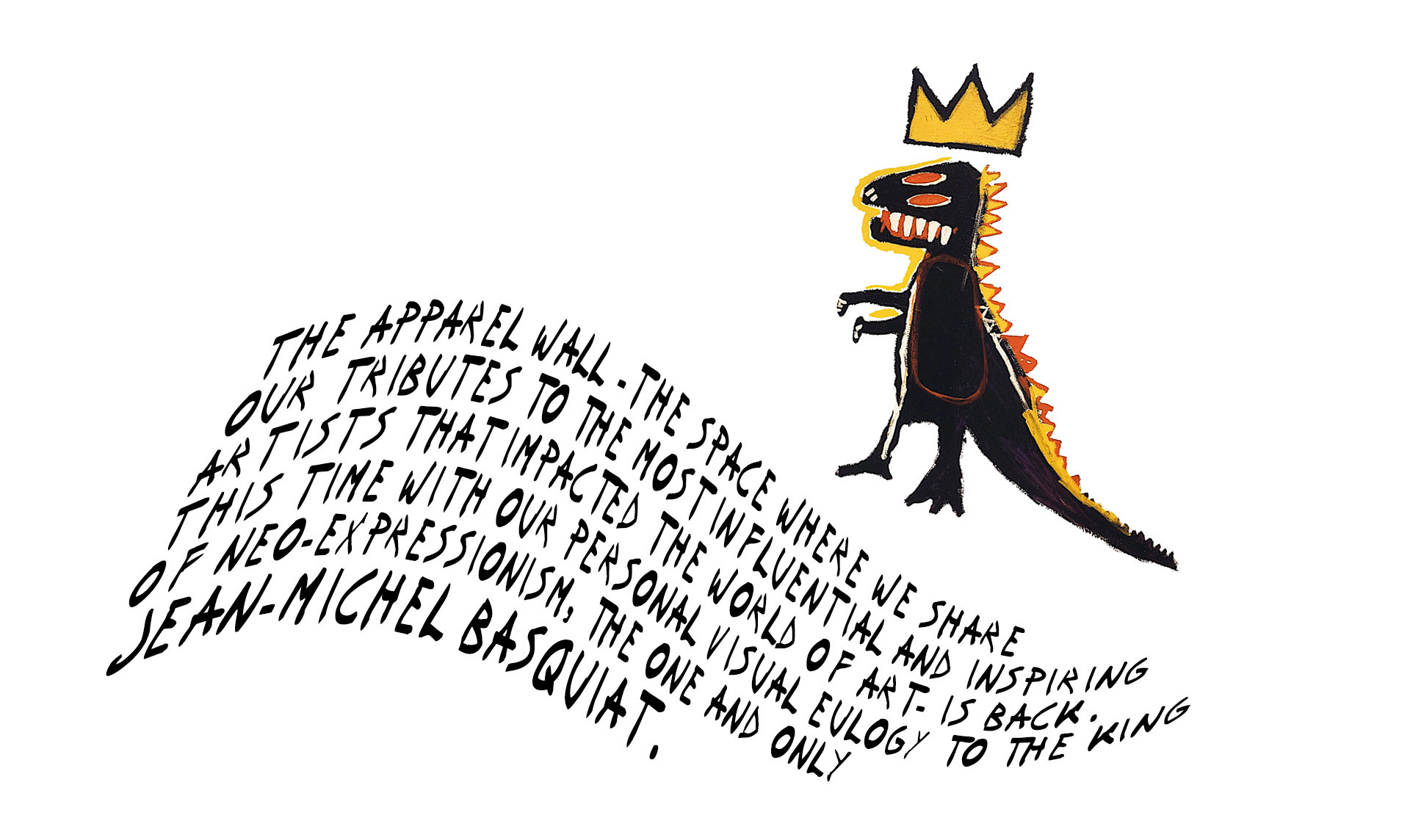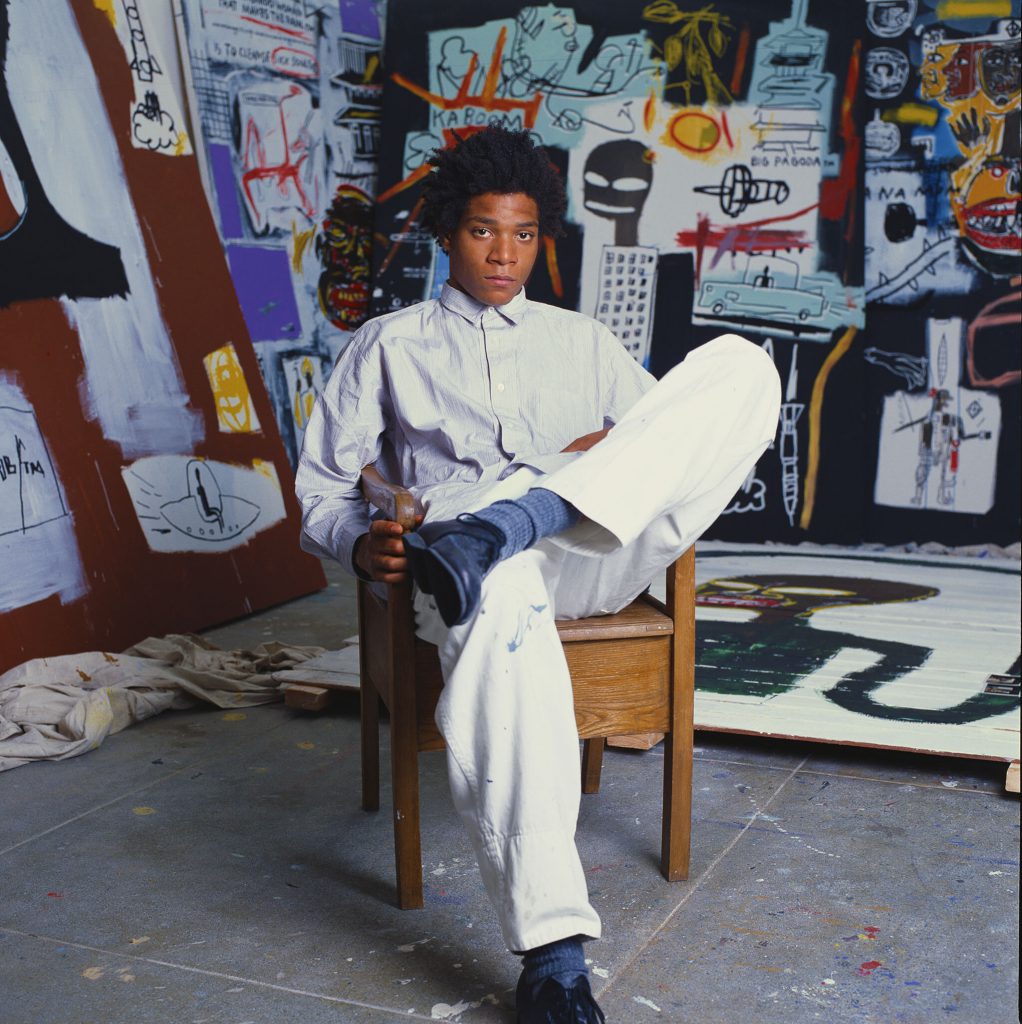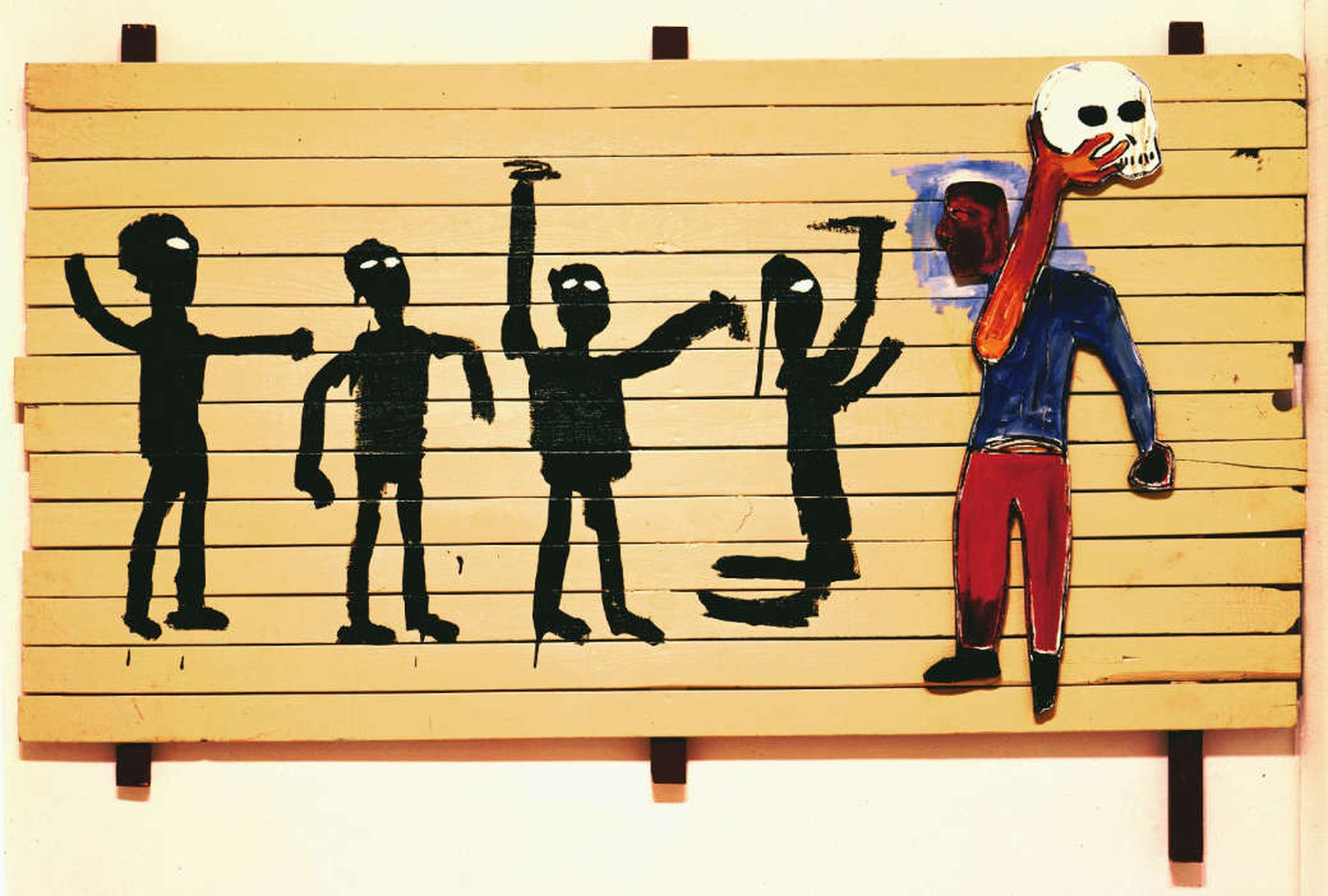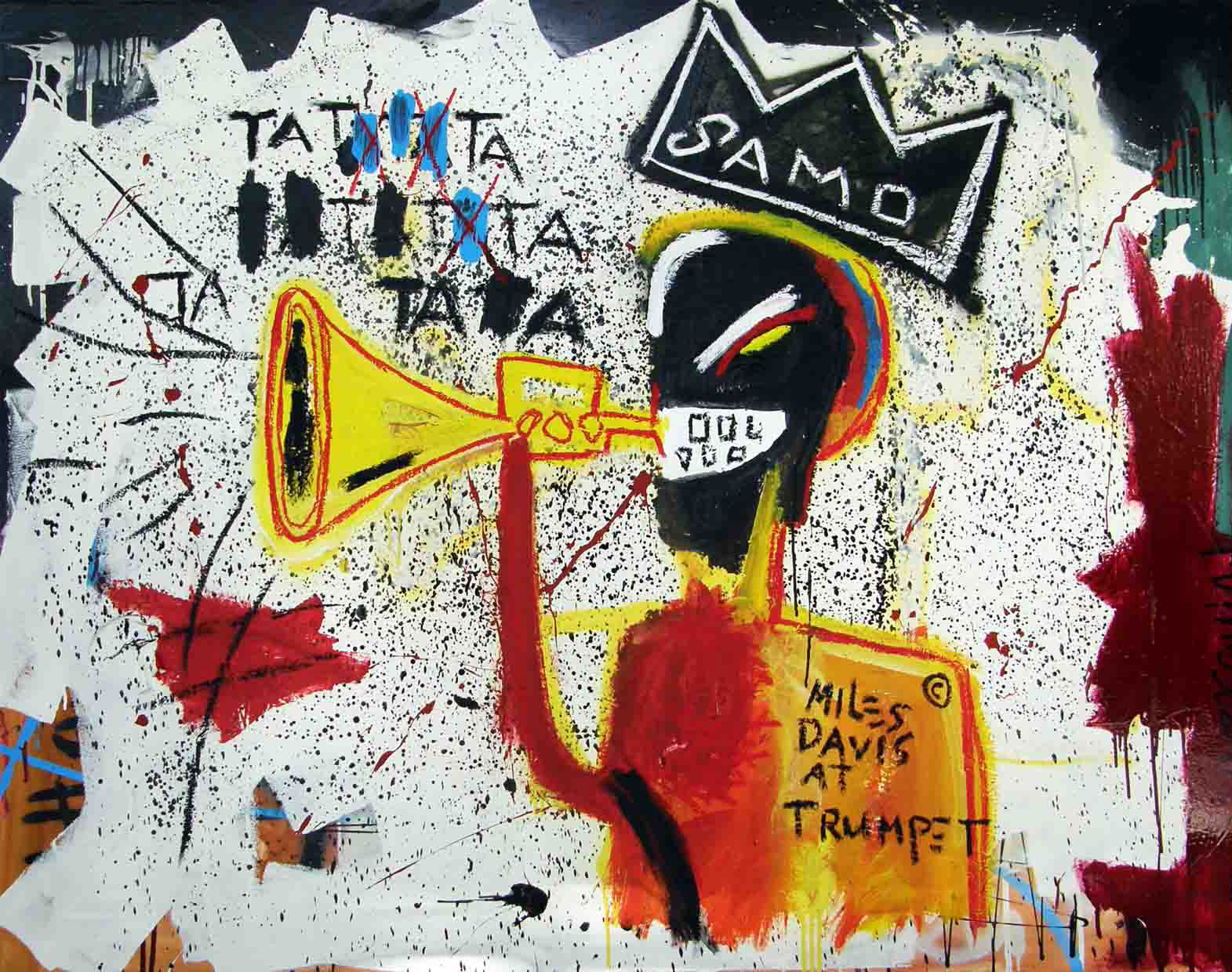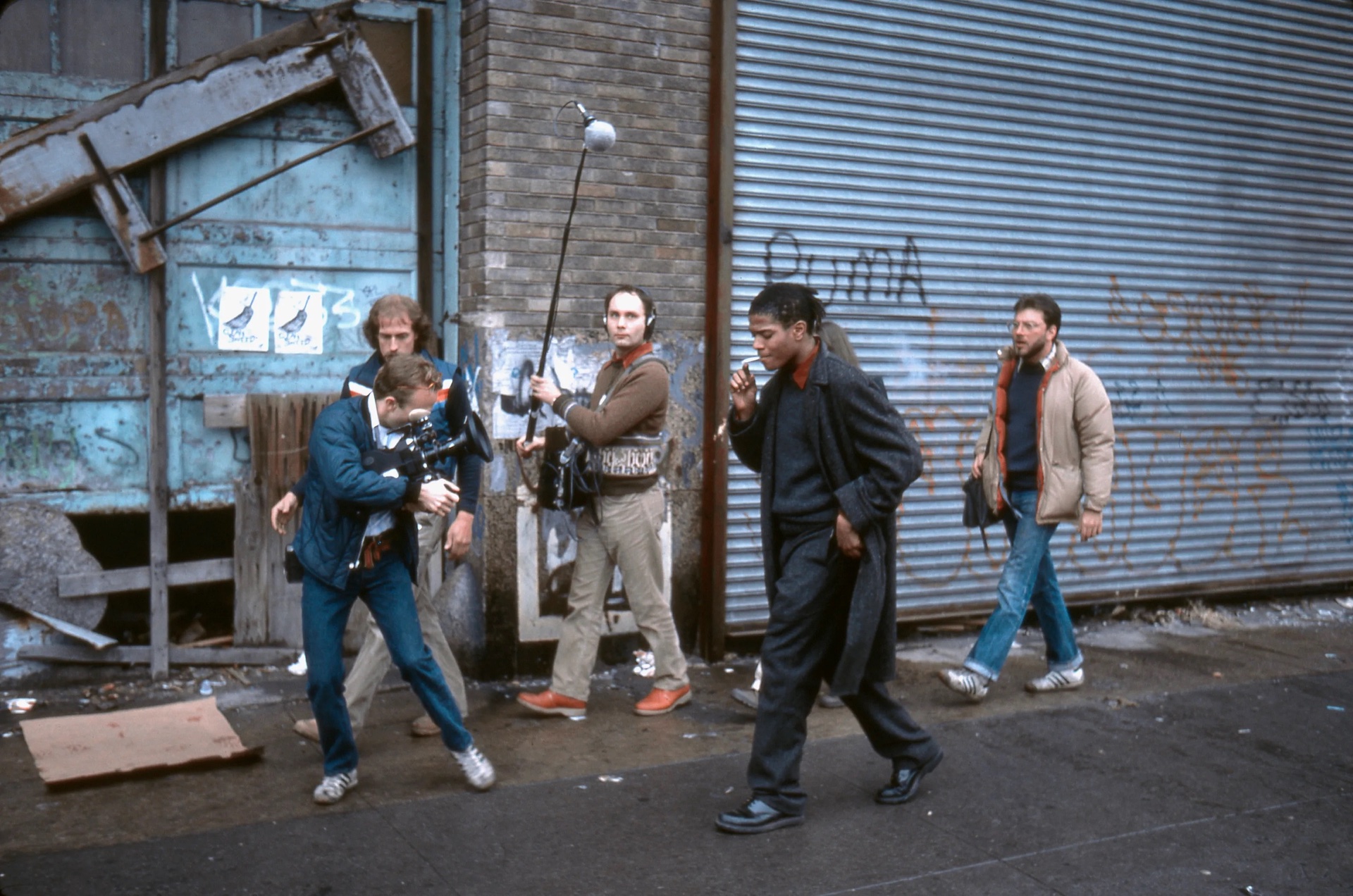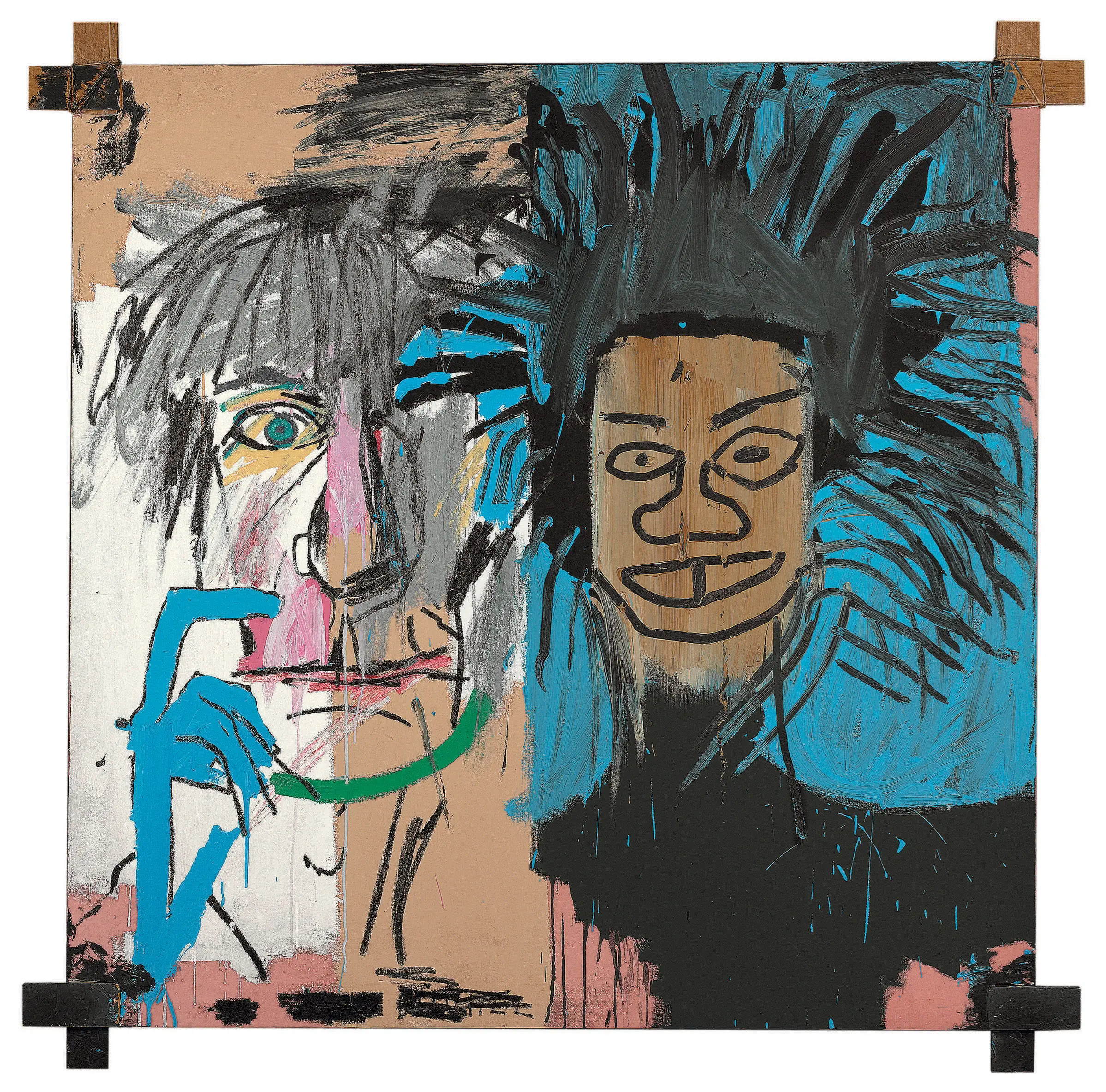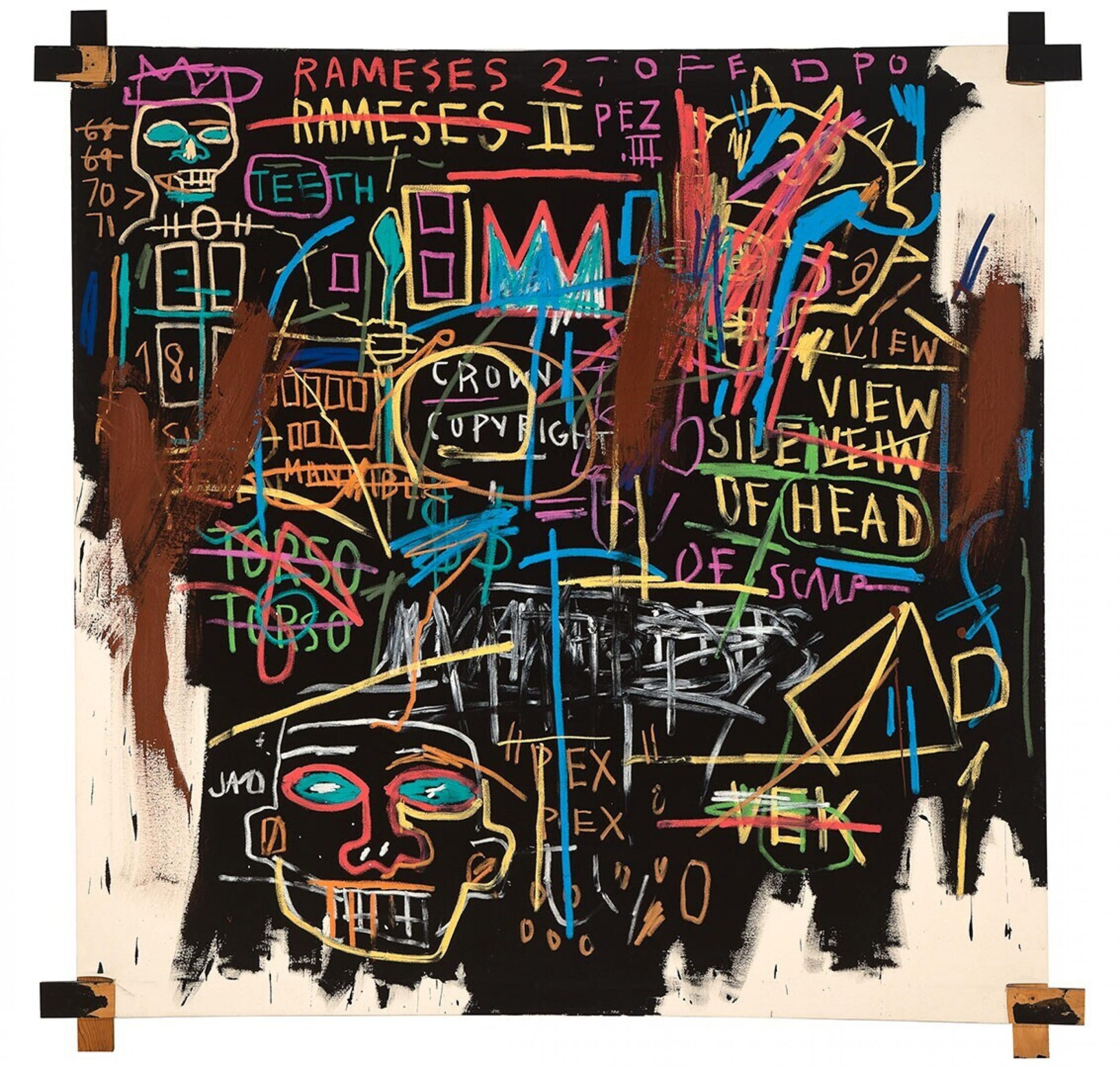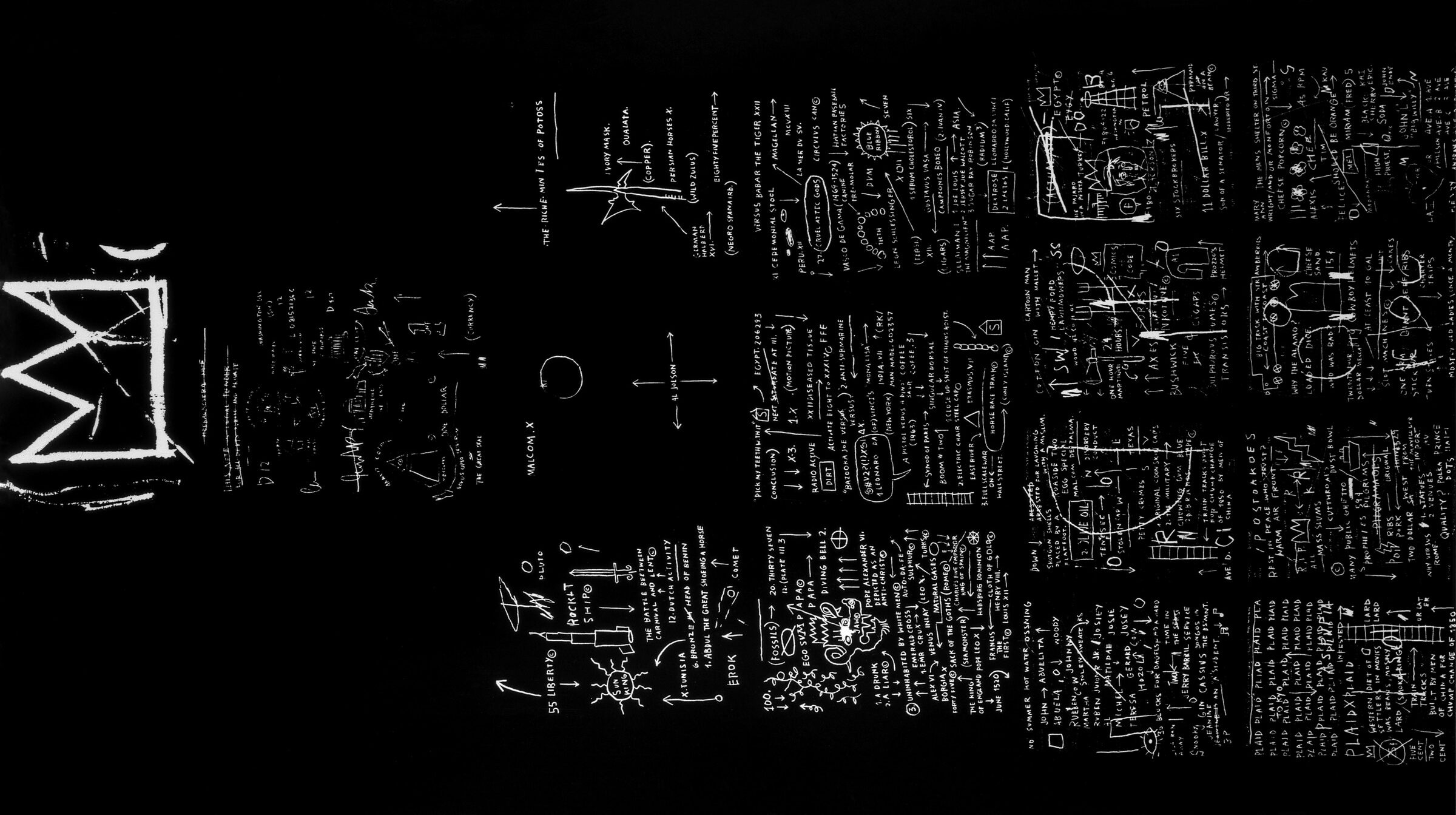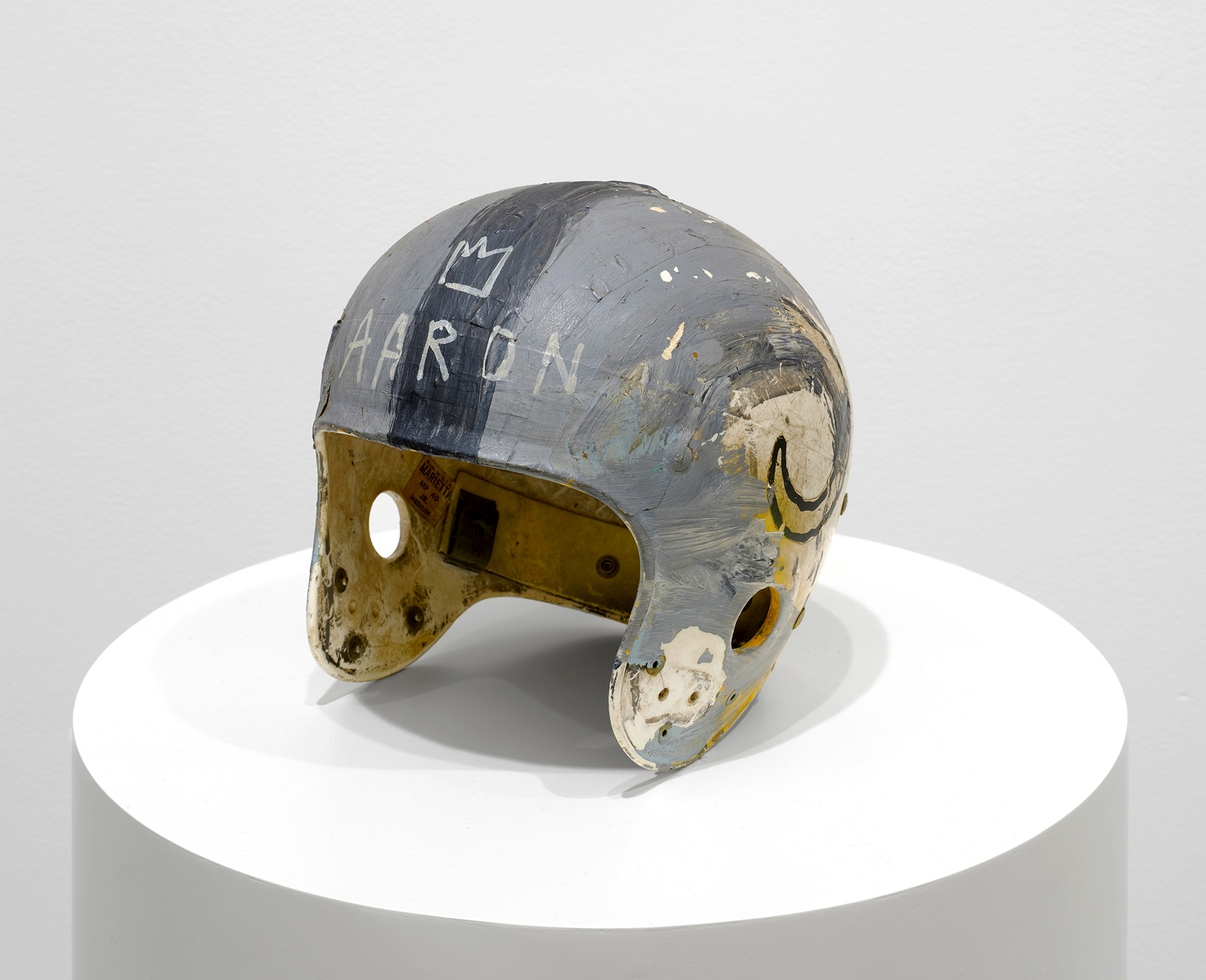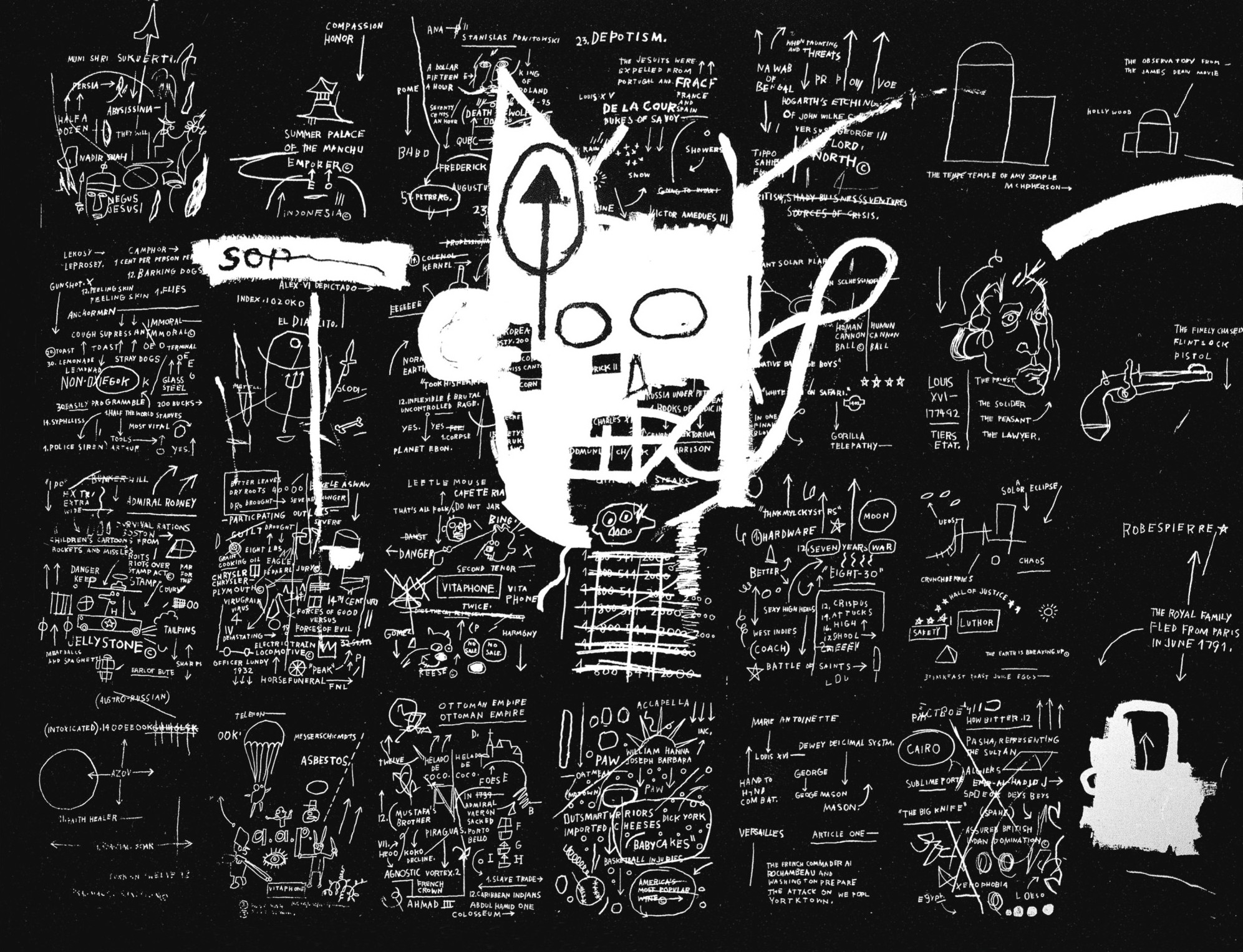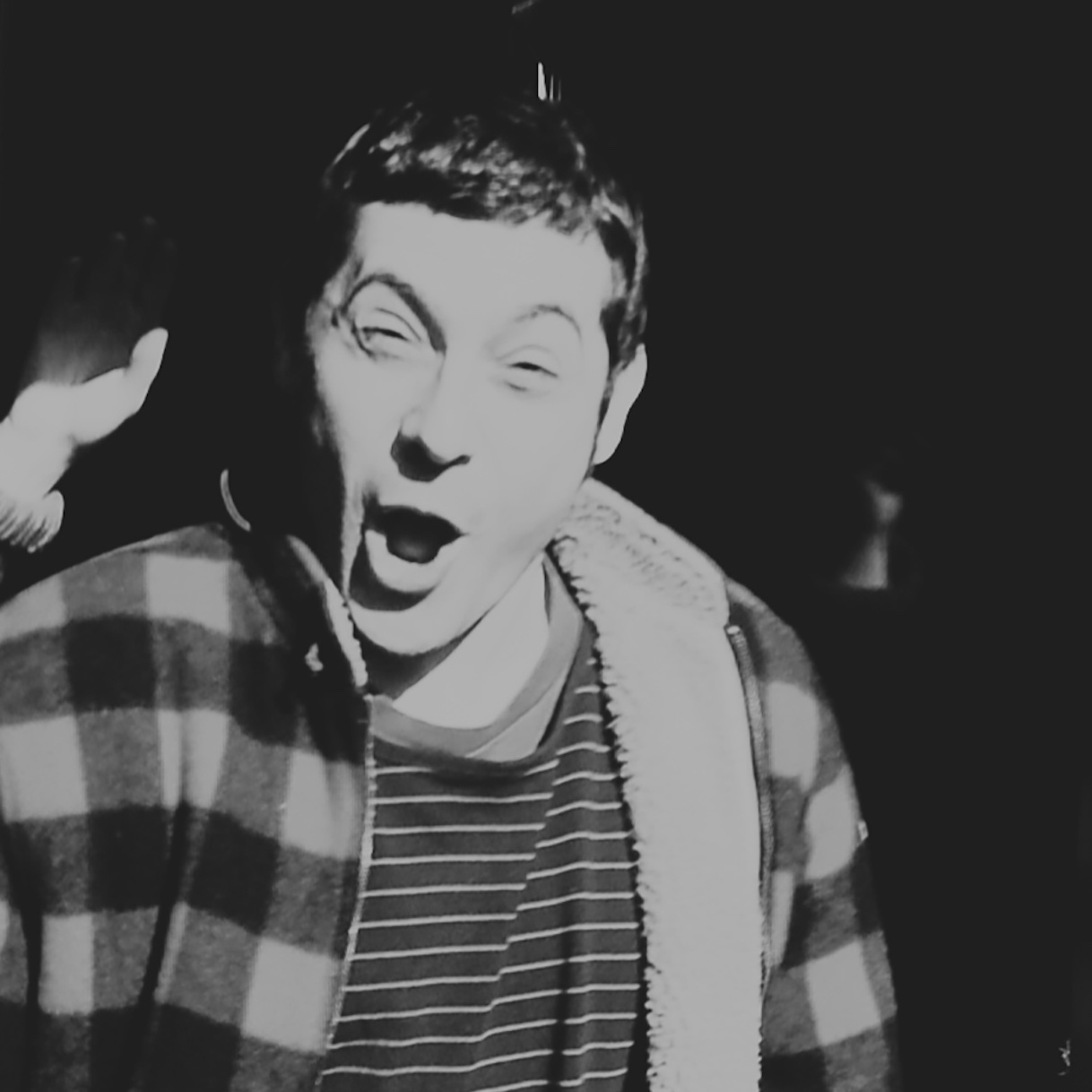APPAREL WALL
Jean-Michel Basquiat
The Apparel Wall -the space where we share our tributes to the most influential and inspiring artists that impacted the world of art- is back. This time with our personal visual eulogy to the king of neo-expressionism, the one and only Jean-Michel Basquiat.
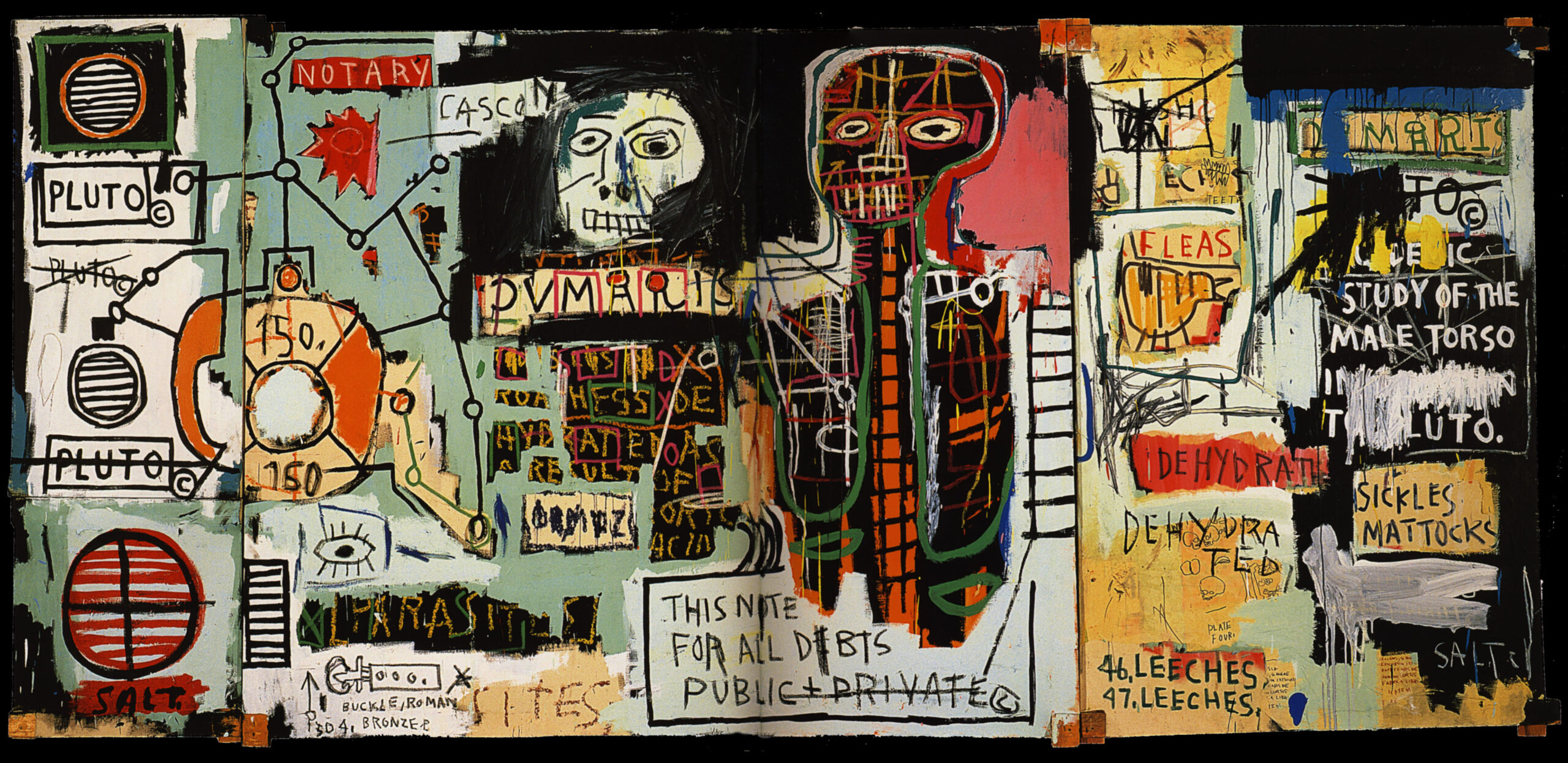
Jean-Michel Basquiat (December 22, 1960 – August 12, 1988) was an American artist who rose to success during the 1980s as part of the Neo-expressionism movement.
Basquiat first achieved fame as part of the graffiti duo SAMO, alongside Al Diaz, writing enigmatic epigrams in the cultural hotbed of Manhattan's Lower East Side during the late 1970s, where rap, punk, and street art coalesced into early hip-hop music culture. By the early 1980s, his paintings were being exhibited in galleries and museums internationally. At 21, Basquiat became the youngest artist to ever take part in documenta in Kassel. At 22, he was one of the youngest to exhibit at the Whitney Biennial in New York. The Whitney Museum of American Art held a retrospective of his artwork in 1992.
.

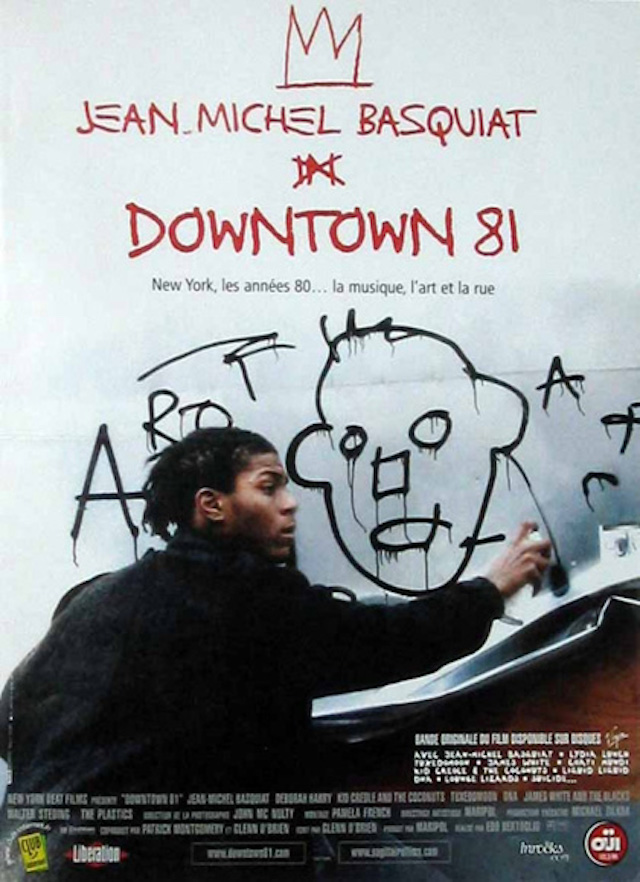
Jean-Michel Basquiat in DOWNTOWN 81
In 1981, writer and Warhol associate Glenn O’Brien, Swiss photographer Edo Bertoglio, and Jean-Michel Basquiat, a graffiti innovator and noise music artist who’d just begun to exhibit his paintings, hit the streets of lower Manhattan to make a movie about the bombed out bohemia that they knew, with a script by O’Brien, Bertoglio directing, and Basquiat, a naturally compelling presence, starring. Left incomplete due to money problems and assembled for release in 2000, Downtown 81, which follows Basquiat trying to move a painting while hustling for a place to sleep, became a window on a lost world of life on the margins and crazy creative ferment. Featuring John Lurie, Fab Five Freddy, and Debbie Harry, with musical performances by DNA, James White and the Blacks, and Kid Creole and the Coconuts—and Manhattan in all its mangy glory.
Basquiat's art focused on dichotomies such as wealth versus poverty, integration versus segregation, and inner versus outer experience. He appropriated poetry, drawing, and painting, and married text and image, abstraction, figuration, and historical information mixed with contemporary critique.
He used social commentary in his paintings as a tool for introspection and for identifying with his experiences in the Black community, as well as attacks on power structures and systems of racism. His visual poetics were acutely political and direct in their criticism of colonialism and support for class struggle. Since Basquiat's death at the age of 27 from a heroin overdose in 1988, his work has steadily increased in value.
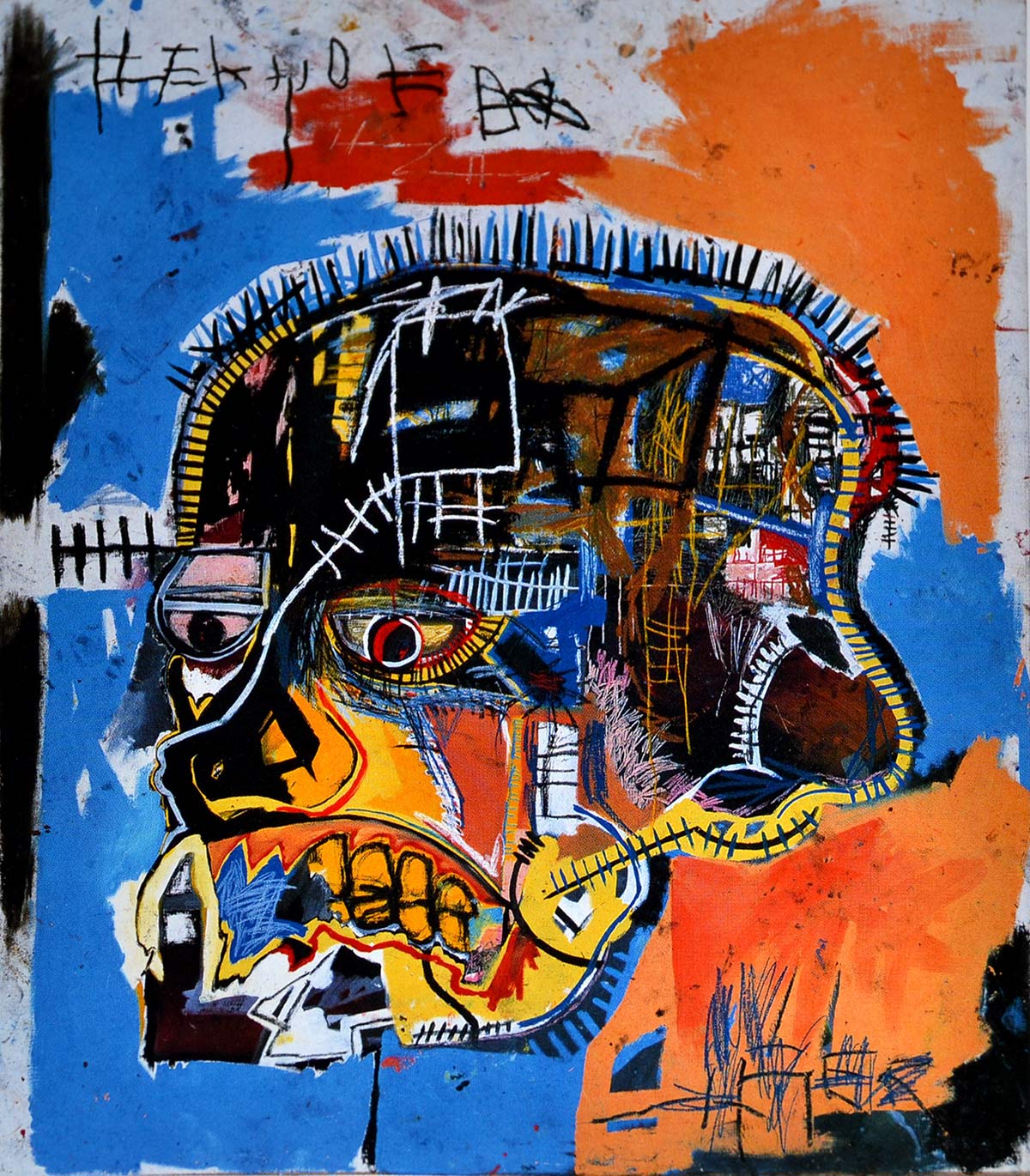
Art critic Franklin Sirmans analyzed that Basquiat appropriated poetry, drawing, and painting, and married text and image, abstraction, figuration, and historical information mixed with contemporary critique.
His social commentary were acutely political and direct in their criticism of colonialism and support for class struggle. He also explored artistic legacies from wide sources, including an interrogation of the Classical tradition. Art historian Fred Hoffman hypothesizes that the underlying of Basquiat's self-identification as an artist was his "innate capacity to function as something like an oracle, distilling his perceptions of the outside world down to their essence and, in turn, projecting them outward through his creative act", and that his art focused on recurrent "suggestive dichotomies" such as wealth versus poverty, integration versus segregation, and inner versus outer experience.
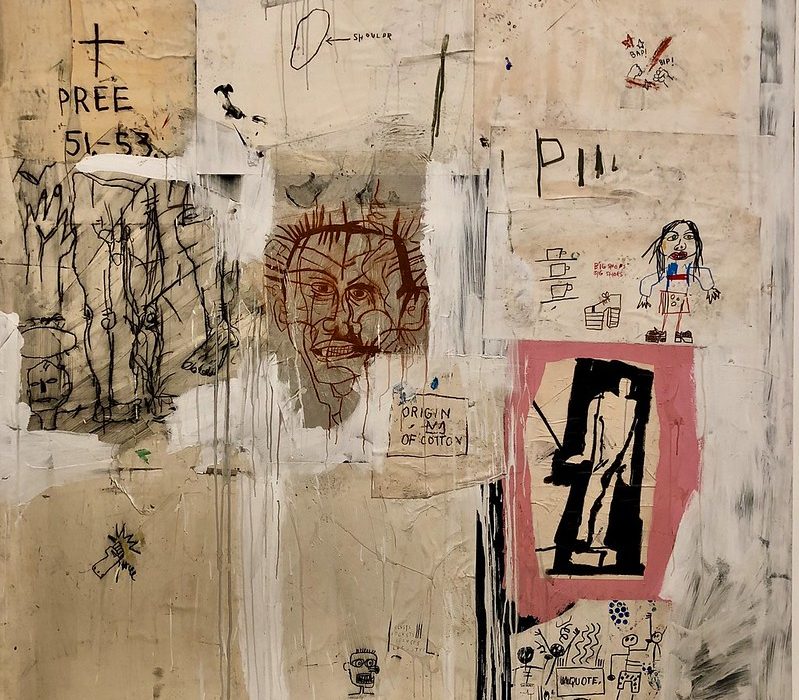
Before his career as a painter began, Basquiat produced punk-inspired postcards for sale on the street, and became known for his political–poetical graffiti under the name of SAMO. He often drew on random objects and surfaces, including other people's clothing. The conjunction of various media is an integral element of his art. His paintings are typically covered with codes of all kinds: words, letters, numerals, pictograms, logos, map symbols, and diagrams.
Basquiat primarily used texts as reference sources. A few of the books he used were Gray's Anatomy, Henry Dreyfuss' Symbol Sourcebook, Leonardo da Vinci published by Reynal & Company, and Burchard Brentjes' African Rock Art, Flash of the Spirit by Robert Farris Thompson.
A middle period from late 1982 to 1985 featured multi-panel paintings and individual canvases with exposed stretcher bars, the surface dense with writing, collage and imagery.
The years 1984 to 1985 were also the period of the Basquiat–Warhol collaborations.
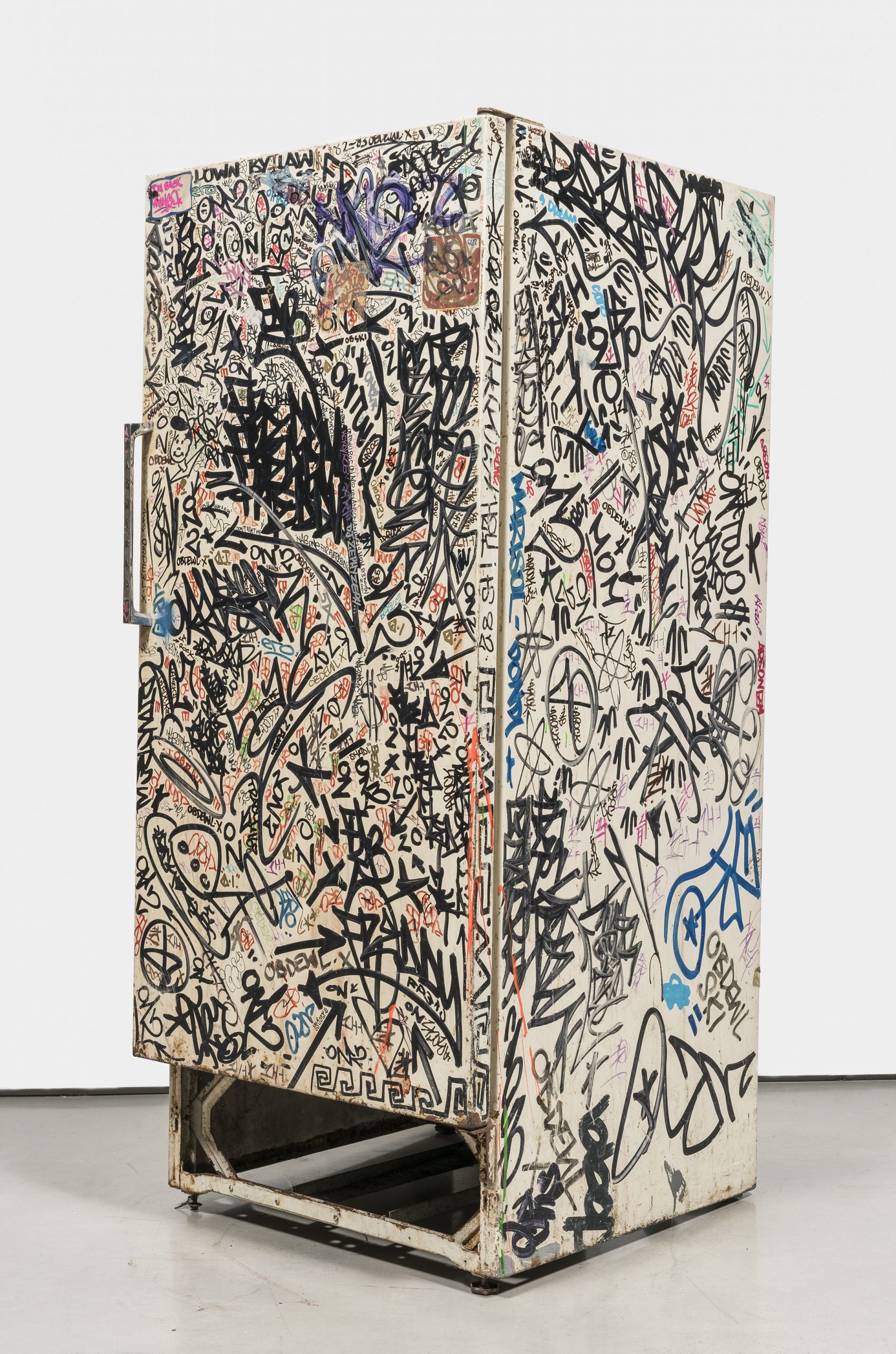
'Drawings'
Drawings Basquiat drawing of the supportive art critic Rene Ricard, Untitled (Axe/Rene) (1984) In his short but prolific career, Basquiat produced around 1500 drawings, around 600 paintings, and many sculpture and mixed media works. He drew constantly, and often used objects around him as surfaces when paper was not immediately at hand. Since childhood, he produced cartoon-inspired drawings when encouraged by his mother's interest in art, and drawing became a part of his expression as an artist. He drew in many different media, most commonly ink, pencil, felt-tip or marker, and oil-stick. He sometimes used Xerox copies of fragments of his drawings to paste onto the canvases of larger paintings. The first public showing of Basquiat's paintings and drawings was in 1981 at the MoMA PS1 New York/New Wave exhibition. Rene Ricard's article "Radiant Child" in Artforum magazine brought Basquiat to the attention of the art world. Basquiat immortalized Ricard in two drawings, Untitled (Axe/Rene) (1984) and René Ricard (1984). A poet as well as an artist, words featured heavily in his drawings and paintings, with direct references to racism, slavery, the people and street scene of 1980s New York, black historical figures, famous musicians and athletes, as his notebooks and many important drawings demonstrate. Often Basquiat's drawings were untitled, and as such to differentiate works a word written within the drawing is commonly in parentheses after Untitled. After Basquiat died, his estate was controlled by his father Gérard Basquiat, who also oversaw the committee which authenticated artworks, and operated from 1994 to 2012 to review over 2000 works, the majority of which were drawings.
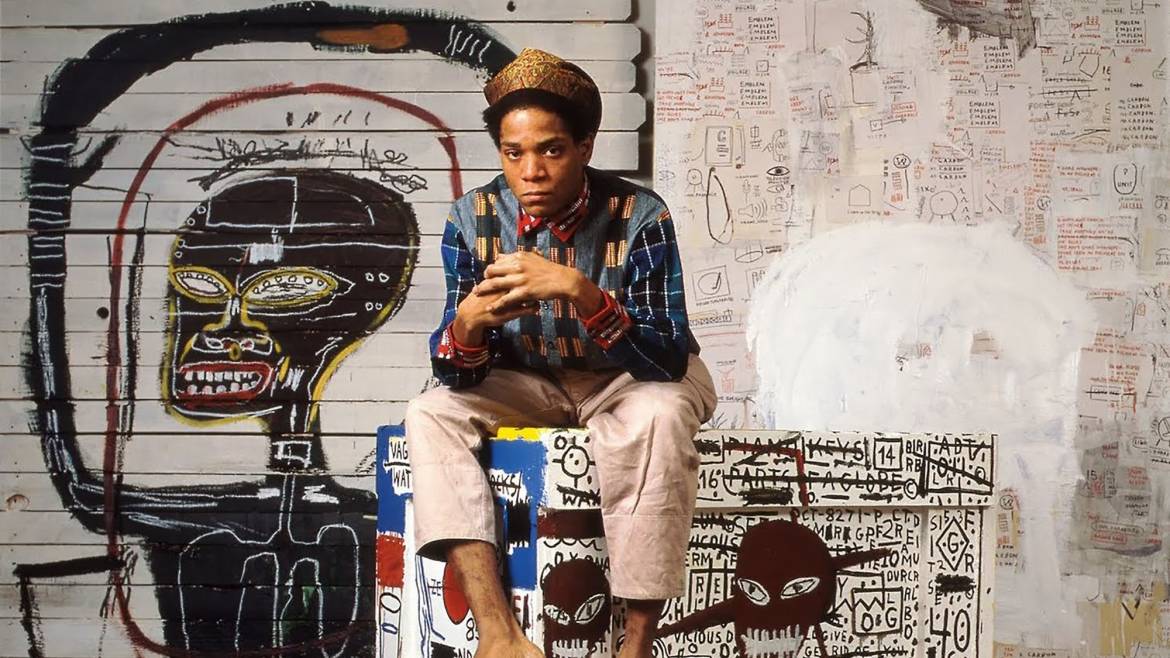
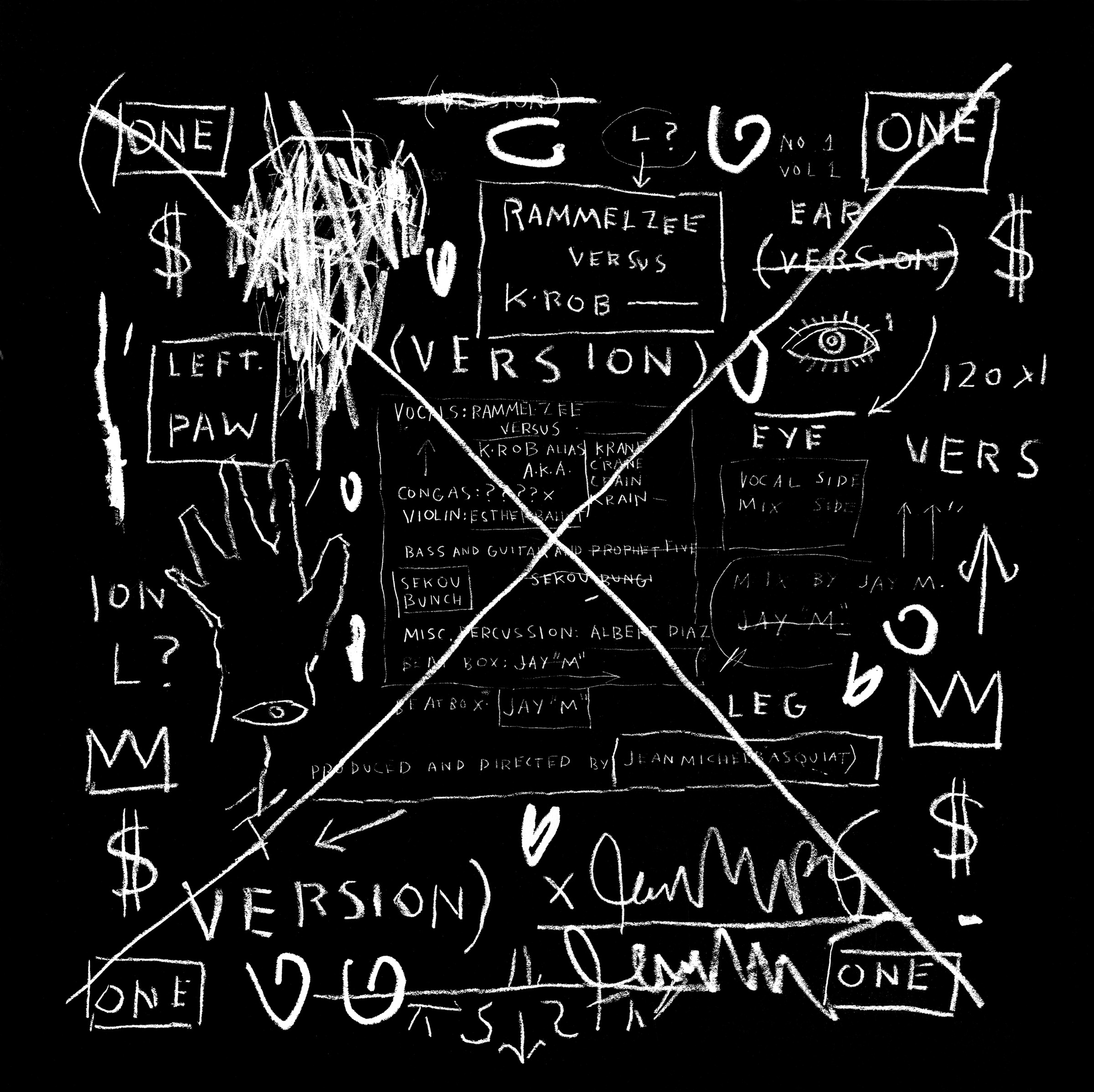
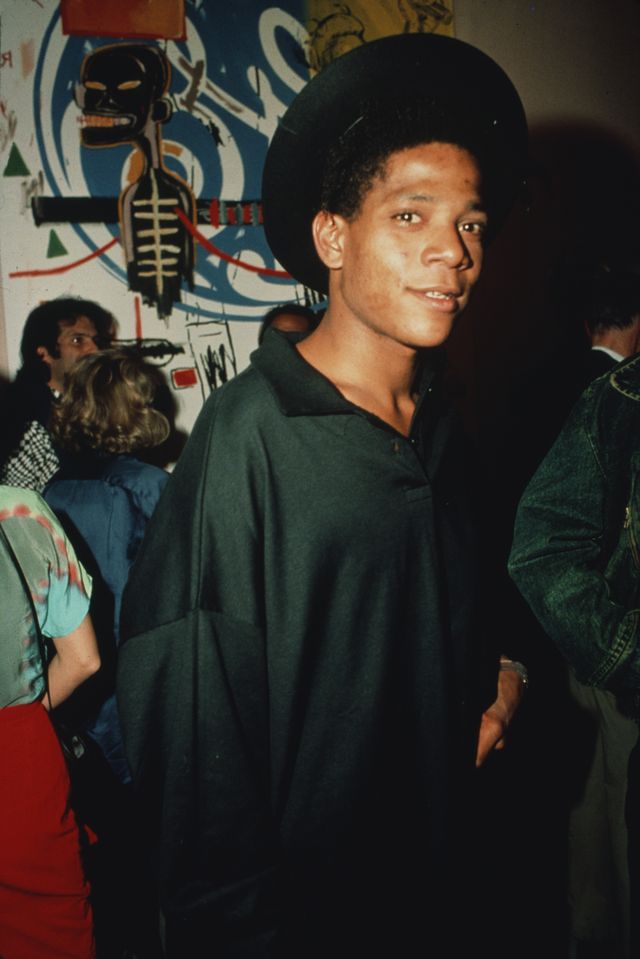
Jean Michel Basquiat interview
From a 1985 Interview painter Basquiat talks about being a reclusive and the gossip of being famous.
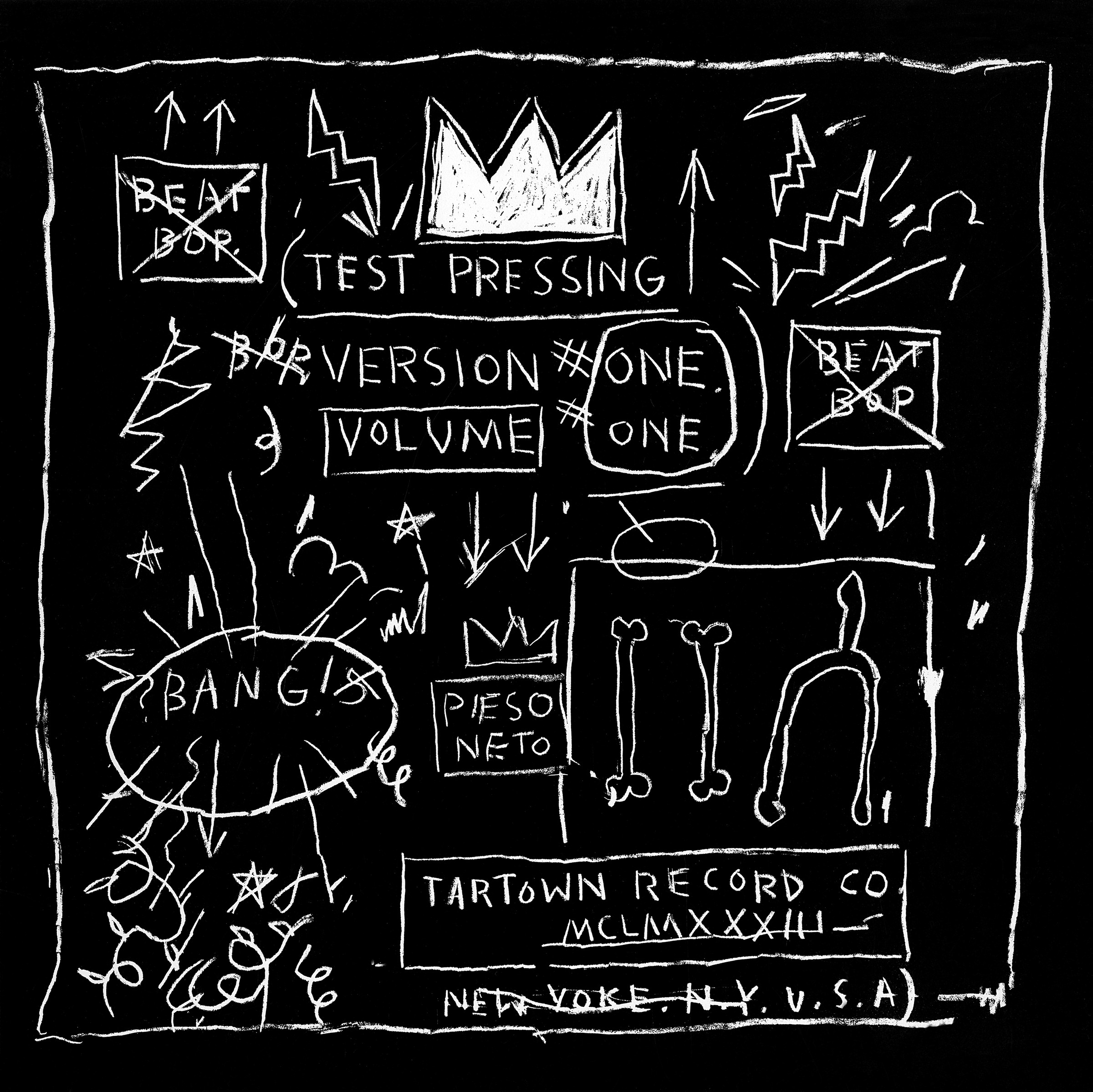
State of the Art
‘A documentary extravaganza that will have other TV stations bristling with envy.’ The Face
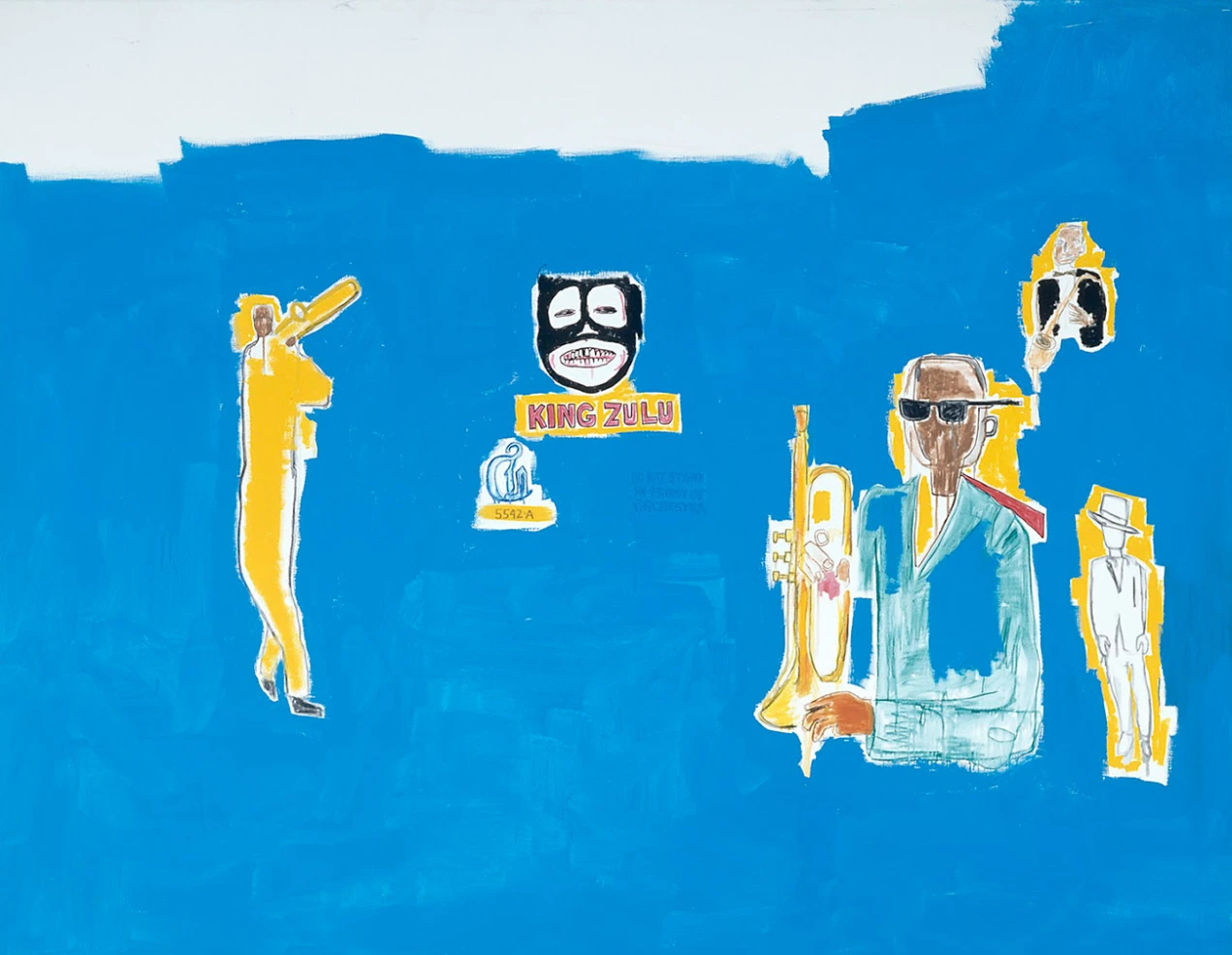
State of the Art is an exciting, authoritative and challenging series of documentaries about the visual arts in the 1980s. Filmed in Europe, the United States and Australia in 1985-6, the six programmes feature many key artists including Joseph Beuys, Jean-Michel Basquiat, Cindy Sherman, Antony Gormley, Hans Haacke and Eric Fischl. Framing the works and concerns of these artists is the intellectual context of the time, and especially the contemporary concerns of post-modernism. Each film adopts a thematic approach, with episodes looking at History, Value, Imagination, Politics, Sexuality and Identity.
Originally seen on Channel 4 in Britain, and then shown in more than 20 countries, State of the Art has been unavailable since its original broadcast. It is released in this 20th anniversary 2-disc DVD edition with a specially filmed interview with the writer of the series, Sandy Nairne, former Director of London’s National Portrait Gallery.
He considers the unique documentary approaches that the series developed to present art on the screen and reflects on the controversy that the series provoked.
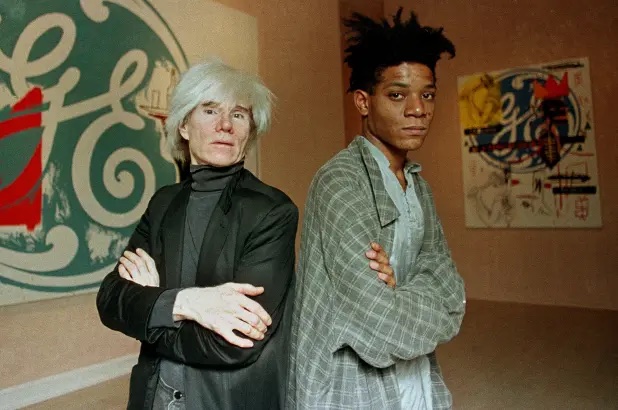

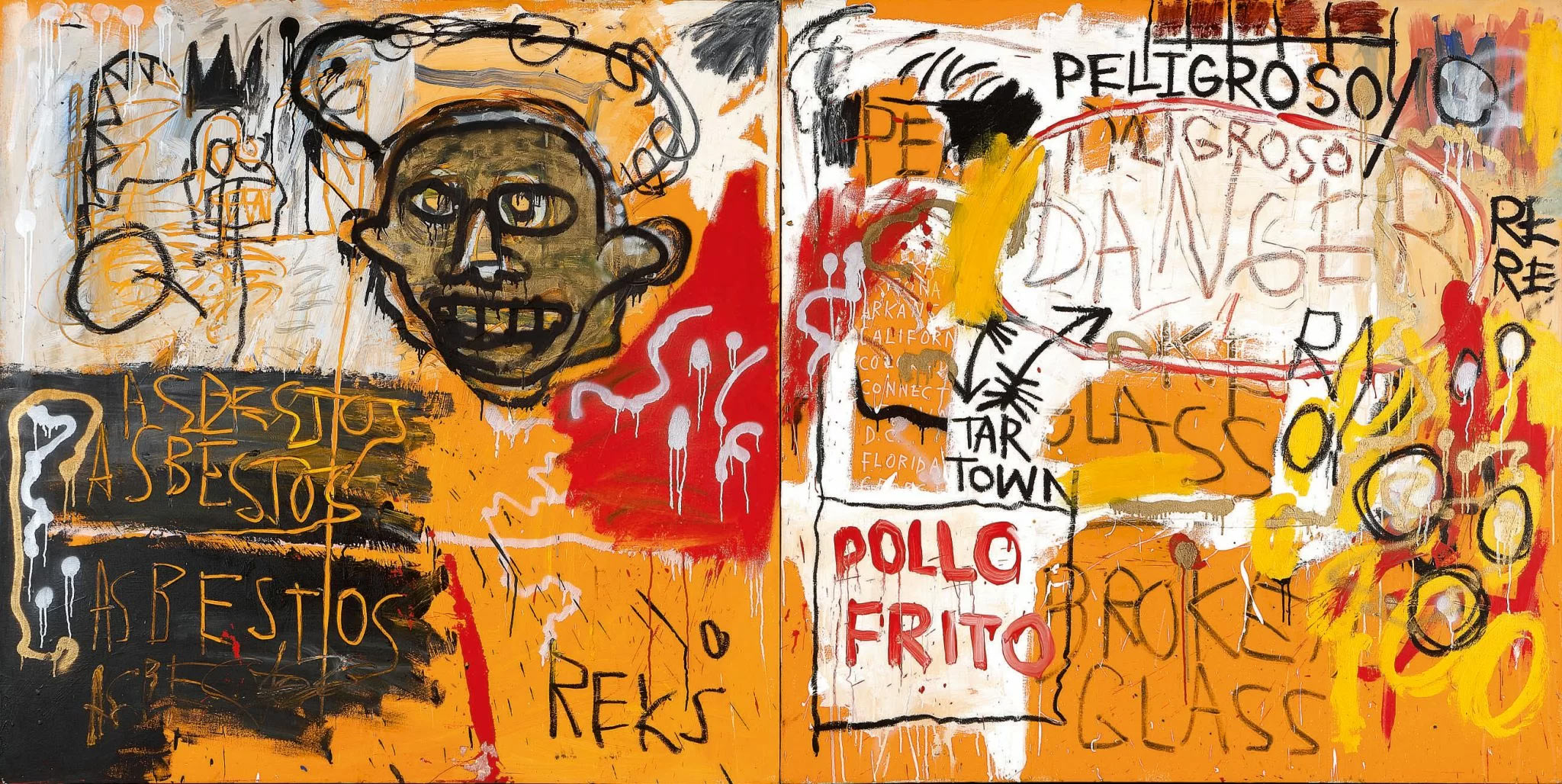
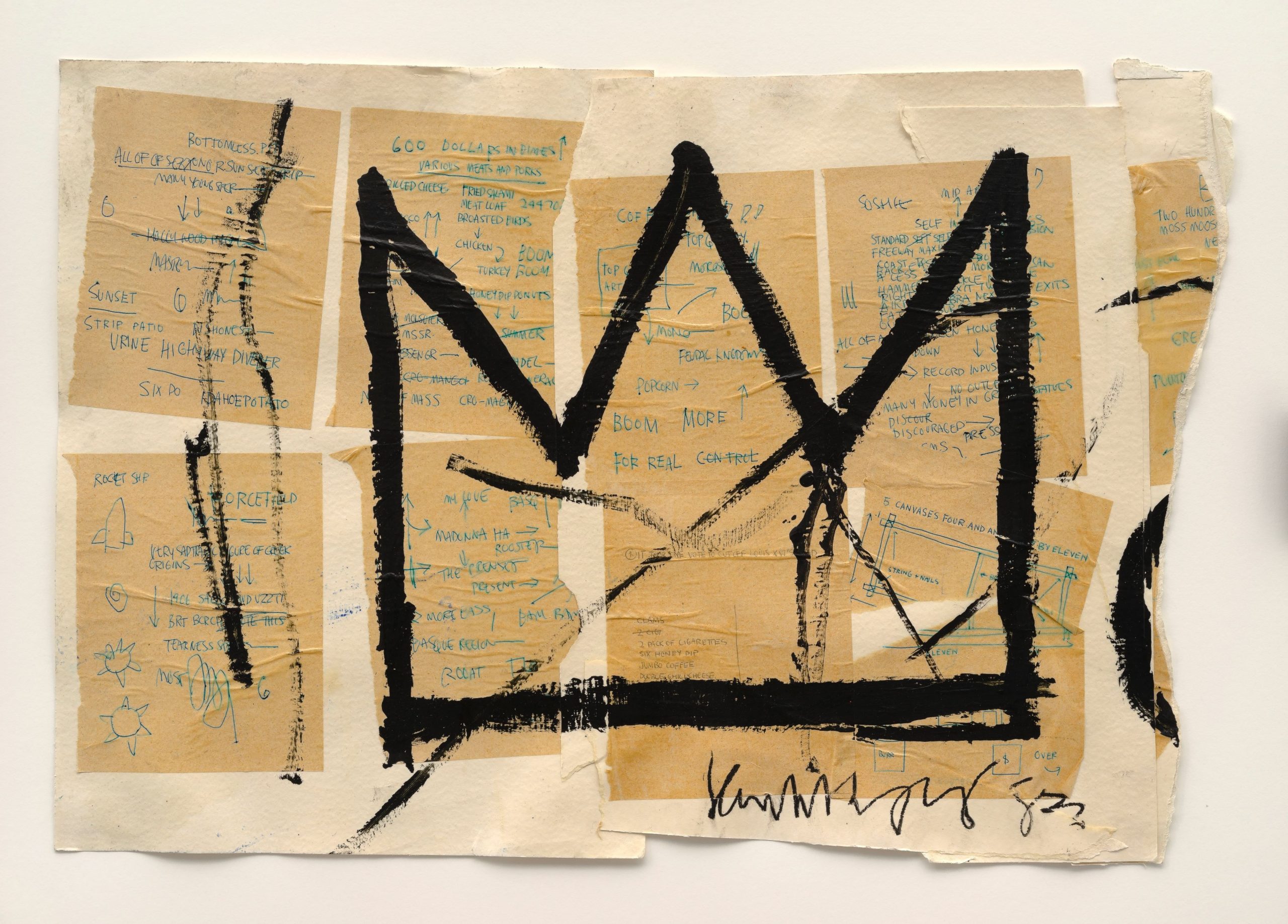
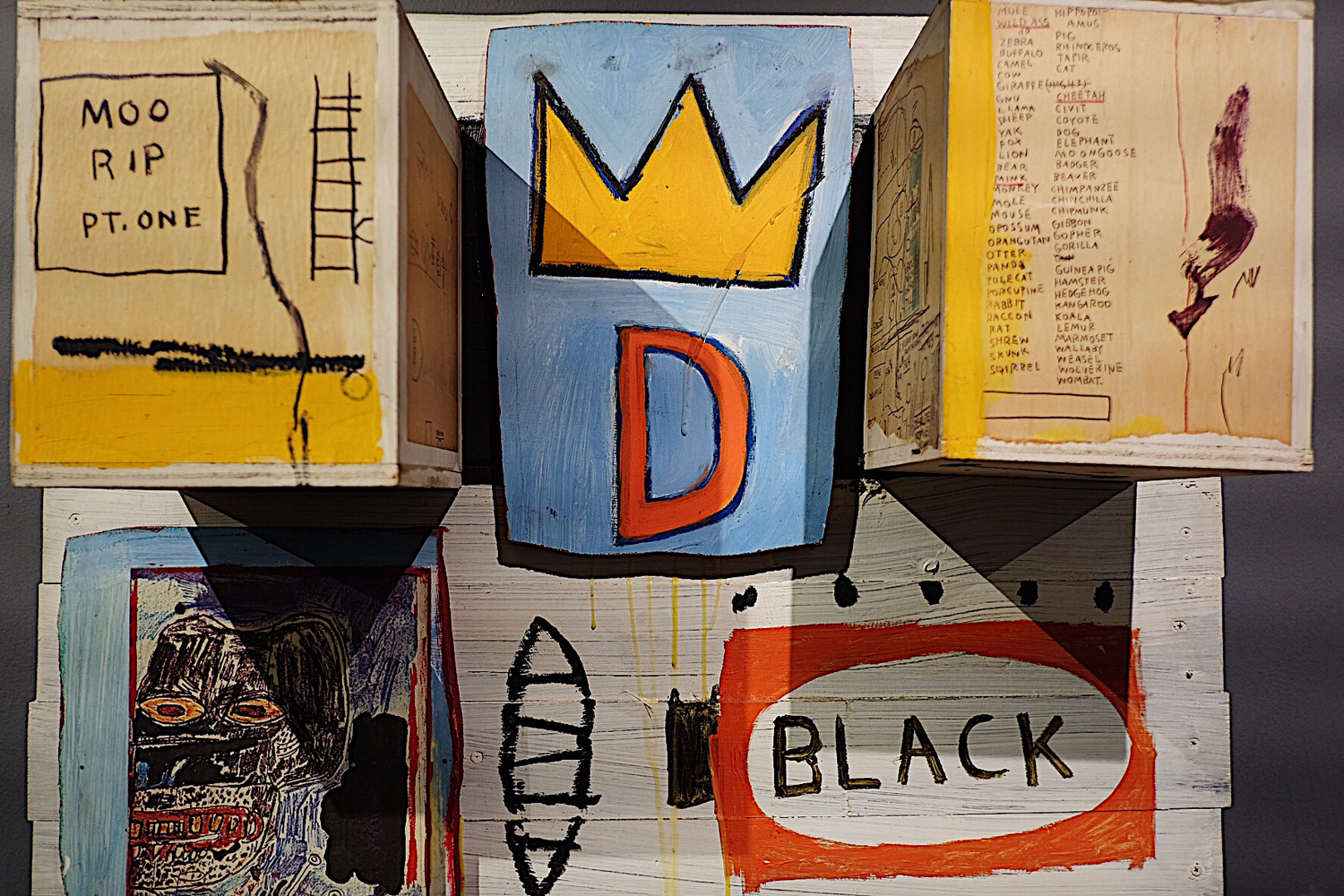
"Basquiat speaks articulately while dodging the full impact of clarity like a matador. We can read his pictures without strenuous effort—the words, the images, the colors and the construction—but we cannot quite fathom the point they belabor. Keeping us in this state of half-knowing, of mystery-within-familiarity, had been the core technique of his brand of communication since his adolescent days as the graffiti poet SAMO. To enjoy them, we are not meant to analyze the pictures too carefully. Quantifying the encyclopedic breadth of his research certainly results in an interesting inventory, but the sum cannot adequately explain his pictures, which requires an effort outside the purview of iconography... he painted a calculated incoherence, calibrating the mystery of what such apparently meaning-laden pictures might ultimately mean."
Apparel Music Radio show episode #219: Kisk
And finally we back with a new episode of Apparel Radio show. Boss Kisk takes over the decks and assembles a great promo mix.
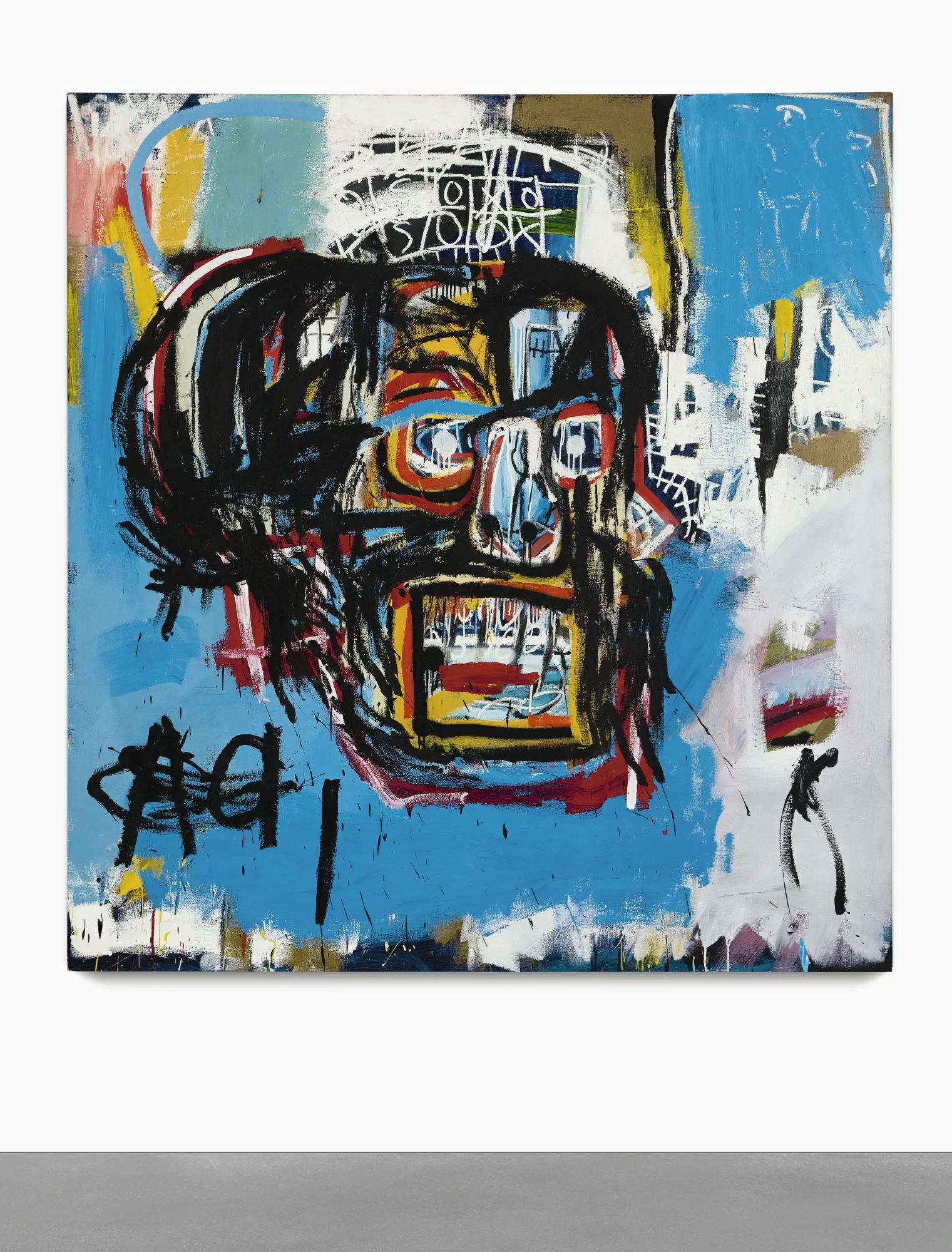
In 2017, Untitled, a 1982 painting depicting a black skull with red and yellow rivulets, sold for a record-breaking $110.5 million, becoming one of the most expensive paintings ever purchased.

